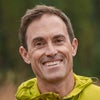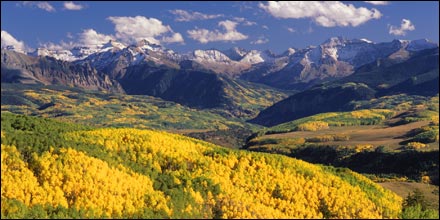Location is Everything
Wanna live where the action is? The goal: trails out the back door, a serious Saturday-morning peloton, whitewater just up the road, and neighbors eager to join in. Our source: the best adventure athletes in America, who tell us where they live and why. The result: 20 communities where locals work, train, and play hard. Start packing.
Bellingham, Washington
Population: 72,320
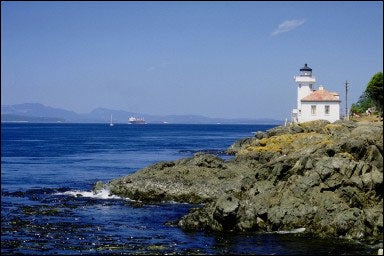
My Town: Bellingham
“Paddlers are amazed at the wildlife that’s right here. An orca will spy-hop ten feet away from your boat, then you paddle back to Boundary Bay for dinner,” says local Brandon Nelson, who bagged a world record last spring by kayaking 146 miles in 24 hours around Lake Whatcom.
Paddlers in this hilly green outpost 90 minutes north of Seattle get it both ways: Bellingham offers back-door access to the San Juan Islands and Puget Sound, and it’s a launching pad to Canada’s Gulf Islands and Vancouver Island. Kayakers putting in on Bellingham Bay can ogle sandstone bluffs south of town, the San Juans on the western horizon, and the 10,778-foot volcanic summit of Mount BakerÔÇöall in one sweeping glance. The beginner-friendly local kayakers’ club, WAKE (Whatcom Association of Kayak Enthusiasts), gathers for frequent training sessions, gear exchange, and group paddles on 4,971-acre Lake Whatcom, on the eastern edge of town. Come spring, informal Wednesday-night races on the lake draw as many as 70 boats. Inevitably, all excursions end up downtown at Boundary Bay brewpub. Johnson Outdoors, parent company of Necky and Ocean Kayaks, has a regional branch just up the road in Ferndale, and Sterling’s Kayaks and Fiberglass, a custom-boat and repair shop, is a local fixture. Though residents tend to describe the job market as underwhelming, things seem to be perking up: Inc. magazine just applauded Bellingham as a boomtown for small techie startups like Microstaq.
REALITY CHECK:
“It rains a lot,” says WAKE president Ted Ullman. “Everybody gets moss between their fingers.”
NEXT BEST:
Bar Harbor, Maine. Chilly 50-degree water and droves of summer visitors to Acadia National Park are givensÔÇöbut so are 100-plus-foot cliffs, bald eagles, seals, and the lovely Porcupine and Cranberry island chains. Membership in the Maine Island Trail Association provides access to 350 miles of coast and campsites.
New Paltz, New York
Population: 13,469
My Town: New Paltz
“The community of climbers here is like a family; everybody’s supportive,” raves Ivan Greene, part-time resident and five-time Northeast climbing champ. “It’s lost in time. And in fall, it’s the most beautiful place on the planet.”“The climbing here is so accessible, and there’s so much of itÔÇöwe have literally years’ worth of routes,” says Evan Marks, who runs the New PaltzÔÇôbased Web site Gunks.com. That’s Gunks as in Shawangunks, of course, the ridges that loom 200 feet above the orchards and farmlands between the Hudson River and the Catskills, just outside this college town 90 miles north of New York City. The Nature Conservancy dubbed the Gunks, with their quartz-conglomerate cliffs and cold-running streams, one of earth’s “Last Great Places.” Hundreds of climbers who come here each weekend from the city and points beyondÔÇömany of whom eventually put down roots in this community of SUNYÔÇôNew Paltz undergrads, artists, homeschoolers, and tie-dyed street drummersÔÇödon’t argue the point. More than 100 miles of old carriage trails on protected lands nearby, like the Mohonk Preserve and Minnewaska State Park, lead to some 800 routes, including such classic face climbs as Survival of the Fittest, boulder problems like Genghis Khan (a 40-foot overhanging cave), and hundreds of short single-pitch routes ranked 5.9 or lower. Amid the 300-year-old stone houses downtown, Rock and Snow is both gear emporium and gossip channel, and the beer list at BacchusÔÇö400 strongÔÇöhelps amplify untold numbers of postclimb recaps.
REALITY CHECK:
Easy access for city dwellers can mean overcrowded trails, especially during high-season weekends.
NEXT BEST:
Bishop, California. You’ll find more than 800 sport-climbing routes on volcanic rock in the Owens River Gorge, northwest of town, and some 3,000 bouldering problems within an hour’s drive. And you’re just a few hours from the storied big walls of Yosemite and world-class ice climbing in the eastern Sierra.
Boulder, Colorado
Population: 101,718
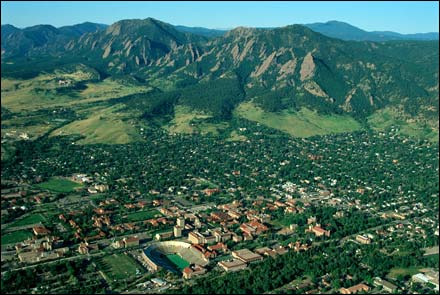
My Town: Boulder
Lynn Hill, arguably the best female sport climber ever, on her chosen hometown: “I love to go out my back door and run on the Dakota Ridge Trail. You have to pick a place that has all the things you need. Boulder was the best place I could think of.”Is there anything quite so humbling as being a run-of-the-mill athlete in Boulder? After all, the guy leading spinning classes at Flatiron Athletic Club is six-time Hawaii Ironman winner Dave Scott. The co-owner of the Boulder Running Company is Mark Plaatjes, former world-champion marathoner; another local runner, Alan Culpepper, finished fifth this year at Boston. Triathletes migrate here to train. The University of Colorado ski team just bagged its 17th national title. Throw a dart in the air and there’s a fair chance it will land on an OlympianÔÇömore than 60 live in Boulder County, by one recent tally. Why do so many end up here? Because the 300-plus sunny days and 5,430-foot altitude make for ideal year-round training. Because the town’s decades-long status as Adrenaline Central has spawned a microeconomy catering to jocks: 3-D bike fittings at the Center for Sports Medicine; discount Zen shiatsu sessions at the College of Massage Therapy; mountain-bike clinics with a former pro racer at Outdoor Divas, a shop on the Pearl Street Mall. Because the city owns 43,000 acres of open space with more than 130 miles of trails for hiking, horseback riding, and cycling. Because there’s a bona fide job market, anchored by the university and knowledge-economy stalwarts like IBM, Sun Microsystems, Ball Aerospace, and brainiac federal labs. When it comes to measuring a place by sheer athletic excellence per square mile . . . top it or drop it.
REALITY CHECK:
Think life in America’s favorite outdoor mecca would be dreamy? Careful what you wish for. Click here to read Marc Peruzzi’s take on “The Gore-Tex Vortex.”
NEXT BEST:
Burlington, Vermont. Recipe for a multisport boomtown: Combine Green Mountain skiing, Smugglers’ Notch climbing, and Long Trail hiking. Blend in sailing and paddling on massive Lake Champlain. Top off with a thriving arts scene and direct flights to NYC. Shake, then chill.
Sebastopol, California
Population: 7,794
My Town: Sebastopol
“I definitely live in Sebastopol because of the community’s alternative thinking,” says Devorah Blum, owner and instructor at downtown’s Yoga Studio Ganesha. “There’s a nice energy here. I can feel the difference.”Apple orchards put this Sonoma County refuge for freethinkers on the map, but these days local pursuits in the name of holistic living go way beyond picking a few Gravensteins and baking a pie. At first glance it’s a pleasantly retro Russian River Valley farm town: good schools, a Methodist church framed by palm trees, rolling vineyards, quirky folk-art sculptures assembled from salvaged junk in front yards along Florence Avenue. Even in the post-hippie enclaves of Northern California, though, you won’t find many small farm towns that contain half a dozen yoga studios, two massage schools, several home-based meditation groups, an Ayurvedic healing center, a Buddhist zendo, a spa offering Japanese enzyme baths, two “equine experiential learning institutes,” and a clinic that treats cancer patients with not only conventional Western protocols but also Chinese medicine, acupuncture, osteopathy, and jin shin jyutsu. “Sebastopol is a hotbed of green/eco/health-conscious lifestyles and businesses,” says David KleinÔÇöand as editor of Living Nutrition magazine, which espouses a raw-food diet, he would know. Not too surprisingly, greens dominate town hall, and organics prevail at Andy’s Produce Market and the Sunday-morning farmers’ market. Even an alliance of vegan jocks, OrganicAthlete, is headquartered in town. Local businesses doing well by doing good include Traditional Medicinals (herbal teas) and Gourmet Mushrooms Inc. (suppliers to chefs and nutraceutical labs). If a career in the healing arts isn’t your bag, you can always become a cellar rat: More than 100 Sonoma County wineries are a short commute away.
REALITY CHECK:
Recent transplants from Marin County have helped inflate the median home price past $650,000. But with lots of under-the-radar optionsÔÇögranny units, barns, the occasional yurtÔÇölocals aren’t packing their bags.
NEXT BEST:
Santa Fe, New Mexico. A longtime draw for second-home-owning Texans, spa-goers, art collectors, artists, and ski bums with a creative side, the City Different is also a vibrant education center for alternative medicine, with schools like the University of Natural Medicine and the New Mexico Academy of Healing Arts.
Madison, Wisconsin
Population: 220,332
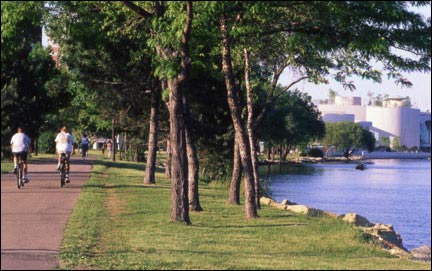
My Town: Madison
“Go any direction and you’ll hit paved farm roads,” says Bryan Smith, 2004 national collegiate criterium champ from the University of Wisconsin and pro rider on the TIAA-CREF developmental racing team. “When I was at UW, we’d have a weekly ride west of town that we’d call the World Championships, where we’d all try to go out and kill each other.”A lot of the adjectives used to describe this Paris of south-central Wisconsin also apply to its cycling scene: inclusive, enlightened, accessible. The bragging starts with infrastructure, thanks to a city government that takes two-wheelers seriously. Over the past 30 years, it has instituted more than 30 miles of well-tended bike paths and 110 miles of on-road bike lanes. For trips under five miles, it’s faster to pedal than drive. Roadies devise endless variations of in-town loops, through parks and the arboretum and around 9,847-acre Mendota and 3,274-acre Monona, glacial lakes that define downtown. For rolling hills, they head for the paved, lightly trafficked farm roads west of town. Hammerheads, novices, and in-betweeners alike sign on for Bombay Bicycle Club rides (twice a week, April to October) and for summer Wisport citizens’ races (one of the few no-license-required race series in the country). Madison is also adored by runners, sailors, paddlers, and fans of locally owned co-ops, restaurants, and organic farms. Many are techie entrepreneurs; others work for the state government, the University of Wisconsin, or economic mainstays like Rayovac.
REALITY CHECK:
In December and January, when average highs dip below freezing and roads grit up with salt and sand, stir-crazy riders may find themselves Googling Tucson.
NEXT BEST:
Austin, Texas. Good roads, club and charity rides, bike-in movies, nonprofits like the Yellow Bike Project (it recycles used rides into free-floating loaners), and the rolling Hill Country just outside of town. The planned six-mile crosstown Lance Armstrong Bikeway, named for some local guy, will be a great pedal forward.
Bend, Oregon
Population: 70,328
My Town: Bend
“Bend’s trail network is vast, and you can run year-round—even when there’s snow in town, the desert trails are open,” says local Steve Larsen, a retired pro triathlete, road cyclist, and champion NORBA rider. “I’ve always been astonished that there aren’t more world-class runners living here.”Bend, Oregon
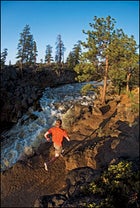 Bend's Steve Larsen picks up speed on the Deschutes River Trail
Bend's Steve Larsen picks up speed on the Deschutes River TrailBend’s central-Oregon mix-and-match topographyÔÇöat 3,600 feet, it sits between the Cascade Range and the high desertÔÇöhas spawned more hyphenated subspecies than Hollywood. It’s even money that the woman on the next barstool over is a climber-snowboarder-dogsledder, a telemarker-triathlete who ties her own flies, or some other ambitious combination. “Trail runner” generally shows up somewhere on the r├ęsum├ę. Pity if it didn’t, as the local stats are impressive: 48 miles of in-town trail, plus 11 miles of dirt path along the Deschutes River; 2.5 million acres of Forest Service land nearby; and almost 300 clear-sky days a year. Ultrarunners and 10Kers alike join in weekly club runs that start at FootZone, a shoe store downtown, where microbreweries and martini bars have replaced lumber mills. Bend’s many charms, of course, are no secretÔÇöas a city official recently told The New York Times, “a new family [moves] in every hour and a half.” But even with an influx of athletes as diverse as professional cyclist Chris Horner, formerly of San Diego, and Hawaiian surfing icon Gerry Lopez, who moved here in 2001, Bend can hardly be considered crowded. On a five-mile trot, you’re more likely to see a herd of elk or deer than another runner.
REALITY CHECK:
Exurbanites from the Bay Area, Seattle, and Portland have helped drive up home pricesÔÇöto the tune of more than 50 percent in the past two years.
NEXT BEST:
Charlottesville, Virginia. This one’s a no-brainer, what with Shenandoah National Park, the Appalachian Trail, George Washington National Forest, and the rugged, waterfall-cooled Blue Ridge Mountains all within 20 miles. A burgeoning lineup of off-road races adds to an already sweet mix.
Asheville, North Carolina
Population: 69,338
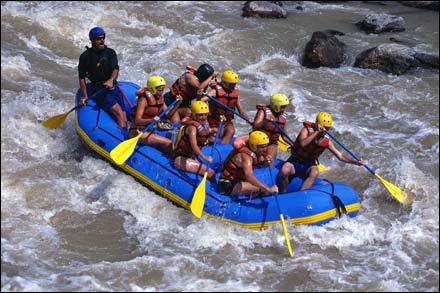
My Town: Asheville
“Asheville is the only city in the Southeast with a true mountain-town feel,” says local expedition kayaker and filmmaker John Grace. “And predictable flows on Class V whitewater year-round? If you’re serious about kayaking, that can give you the skills to paddle any river, anywhere.”Thank nature, God, or geological serendipity for the jackpot of whitewater riches in western North Carolina. Home to 6,000-foot Appalachian peaks, the region gets more than 47 inches of rain annually, and the runoff has to go somewhere. Hence the Class V runs on the Raven’s Fork, the Linville, the Toxaway, and the West Prong of the Pigeon, plus hundreds more Class IIÔÇôIV stretches on the Nantahala, Nolichucky, Tuckaseegee, and Ocoee rivers, all within an hour or so of Asheville. Duke Energy also gets credit for a major assist: The power company’s near-daily dam releases on the Green River serve up legitimate Class V whitewater 12 months a year, on a 3.5-mile section known as the Narrows. The Green’s waterfalls, slides, eddies, and boulder gardens, 22 miles south of town, are where elite steepcreekers like Pat Keller and Tommy Hilleke cut their teeth. If no one answers the phone at local businesses like Astral Buoyancy (PFDs) and Liquidlogic (kayaks), they’re probably out there, too. Apr├Ęs-paddle, head forthe slacker-hip downtown, where art deco facades house indie caf├ęs, an eclectic music scene, and a core of craftsfolk that rivals any in the nation.
REALITY CHECK:
Asheville’s low unemployment rate (3.5 percent) masks a disconnect between low-paying tourism and service jobs and a steeper-than-average (by Southeast standards) cost of living.
NEXT BEST:
Hood River, Oregon. Cascades snowmelt means Class V thrills on the Little White Salmon, beginners’ training runs on the Klickitat, and something for everyone on the White Salmon and the Hood. When the flow trickles off, there’s boardsailing on the Columbia River, skiing and climbing on Mount Hood, and lots of road and trail cycling.
Durango, Colorado
Population: 15,628
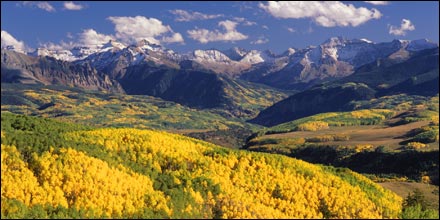
My Town: Durango
“The cycling community is incredible: great group rides, great trails, great roads, and great people,” says Durango resident Todd Wells, two-time U.S. cyclocross champ and 2004 mountain-bike Olympian.One small detail from the Mountain Bike World Cup time trial that was held here five years ago will tell you all you need to know about Durango. The course ran through the Steamworks Brewing Company, entering where the front window had been removed, passing the bar, and exiting via the side patio. That’s not the only clue that off-road biking trumps most other priorities in this dirthead arcadia, where the undammed Animas River flows past a backdrop of 13,000-foot-plus San Juan peaks. Photos and jerseys autographed by storied local ridersÔÇöNed Overend, Juli Furtado, Myles RockwellÔÇöare boilerplate restaurant decor around the Victorian downtown. The Durango Coffee Company sells six different Tom Danielson blends, named for the Discovery-team rider and 2005 Tour de Georgia winner who stuck around after graduating Fort Lewis College. Indoctrination starts early: There’s a junior-high mountain-bike program and a Durango Wheel Club junior development team. Already graduated? Tuesday-night group rides subdivide into levels A through C and head off for terrain that starts right in townÔÇöthere’s the rolling, 42-mile high-desert Horse Gulch network, the forested singletrack of 40-mile Hermosa Creek, or the steep shale of six-mile Test Track, to name a few. Fast-twitch riders fill up their calendars with weekly time trials and the brutal 48-mile, 5,700-foot-elevation-gain Iron Horse Bicycle Classic to Silverton each May.
REALITY CHECK:
With the Denver and Salt Lake City job markets both more than 300 miles away, all too many starstruck new arrivals join the ranks of advanced-degree holders who end up waiting tables.
NEXT BEST:
Moab, Utah. Why do thousands of riders pilgrimage to this onetime uranium boomtown? Because the prospectors left a thousand miles of singletrack winding over slickrock and through red-rock canyons. The 12,000-foot La Sal Mountains are an uncrowded bonus.
Truckee, California
Population: 15,936
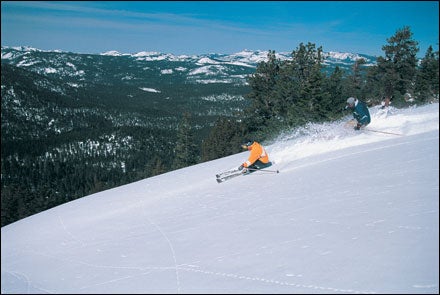
My Town: Truckee
“There’s so much freedom here, and so much you can do,” says Truckee-based skier Daron Rahlves, winner of 12 World Cup and seven U.S. national titles. “Skiing at Sugar Bowl is insane, with dense, heavy snow, really technical terrain, and rocks and good drops and tree skiing. It’s a gem.”If Truckee hasn’t had nine lives yet, it’s getting close. In the last century and a half, the town, bounded by the Truckee River and jaw-dropping Sierra Nevada mountainscapes, has been a stagecoach stop, a rough-and-tumble lumber-mill town (complete with a red-light district, opium dens, and routine gunfights), and a haunt of golden-age Hollywood movie crewsÔÇöCharlie Chaplin and Clark Gable both filmed on location nearby. These days, Truckee is best known as a locals’ home base in the resort-infested Lake Tahoe Basin, 190 miles northeast of San Francisco and just east of the crest of the Sierra Nevada. That a good number of those locals are freeskiers, ski-film makers, or members of the U.S. ski or snowboard team has much to do with the dozen lift-served mountains within minutes of town: 2,850 feet of vertical at Squaw Valley’s natural amphitheater, the quieter runs and backcountry of Sugar Bowl, and the intermediates’ paradise at Northstar-at-Tahoe, to name a few. On Commercial Row, the brothels are gone, but a funky Wild West feel lives on in Truckee’s downtown historic district, where covered walkways lead to shops, low-key bars, and a wider range of restaurants than a town this size has any right to, from Cal-Asian caf├ęs to wood-fired- pizza joints. Not surprisingly, tourism accounts for about a third of local jobs, with retail and construction not far behind. But with epic hiking, trout fishing, mountain biking, and whitewater paddling nearby once snow season ends, no one actually comes here to be a workaholic.
REALITY CHECK:
With the year-round population ballooning more than 70 percent since 1990 and golf courses multiplying, debates about growth and development threatening Truckee’s small-town vibe won’t end anytime soon.
NEXT BEST:
Jackson, Wyoming. It’s steep: Jackson Hole Mountain Resort has 4,000-plus feet of vertical drop. It’s deep: Jackson gets about 38 feet of annual snowfall. It’s a leap: off towering cliffs and into narrow couloirs. But it’s definitely not cheap: The average house price tops $1 million.
Haleiwa, Hawaii
Population: 2,225
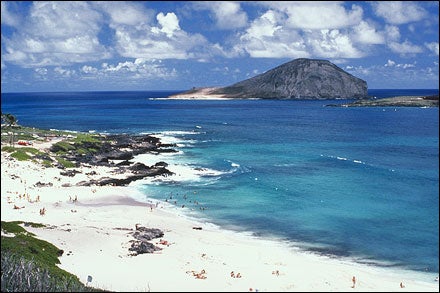
My Town: Haleiwa
“There’s a lot of surf towns, but Haleiwa’s one of the best in the world,” says Fred Patacchia, the 2005 Association of Surfing Professionals’ men’s rookie of the year. “There are so many varieties of waves in that stretch—it accommodates everyone. It’s just a nice little town, you know?”Surf capitals come and go, but for nearly half a century, one thing hasn’t changed: The road to surfing stardom still rolls right through Haleiwa, gateway to Oahu’s North Shore and some of the sport’s most fabled waves: Pipeline, Sunset, Waimea. In a sense, Haleiwa, which marks one end of the “seven-mile miracle” stretch of beaches and some 40 surf breaks, is two different towns. One materializes every winter, when thousands of fans and photographers follow the planet’s best surfersÔÇöincluding North Shore residents Jamie O’Brien, Pancho Sullivan, and Fred PatacchiaÔÇöas they converge for high-profile contests like the World Cup and the Pipe Masters, braving sometimes-lethal shallow reefs, monster tubes, and wave faces that can top 30 feet. Once the mobs and the hype (and the swells) die down, the other Haleiwa reappears: a sleepy old sugar-mill town where Jack Johnson learned to strum a guitar at backyard barbecues. It’s a laid-back anti-Waikiki, where feral chickens shriek from the branches of mango trees, locals gear up at any of a dozen or so surf shops and refuel on ahi tacos at Cholo’s, and grandparents cheer on longboarding preteens in the annual Menehune Surf Championships. On the job front, survival often entails doubling up on tourist-related gigs, driving an hour or so to Honolulu, or sponging off your friends. On the surfing front, respect is earned, not granted: Wise newcomers start out at the less hyped, less crowded breaks, such as Kammies or the more challenging Pupukea, until they find their place in the pecking order.
REALITY CHECK:
The good news about real estate on the North Shore: Prices are leveling off. The bad news: The median home price is around $900,000, and even that won’t get you oceanfront. Plan B? Pony up $1,500 to rent a modest one-bedroom until the rep from Quiksilver calls.
NEXT BEST:
Ventura, California. Close to Rincon, one of California’s best point breaks, along with stellar surfing at Emma Wood and Silver StrandÔÇöand just far enough from Los Angeles. Ventura hosted the first prize-money surfing contest (in 1965), and it was here that three-time world champ Tom Curren and the surfing/filmmaking Malloy brothers perfected their moves. Ventura’s cool old downtownÔÇöwedged up against the foothills a few blocks from the PacificÔÇöis packed with eateries, thrift shops, and bookstores.
The Gore-Tex Vortex
Think life in America’s favorite outdoor mecca would be dreamy? Careful what you wish for.
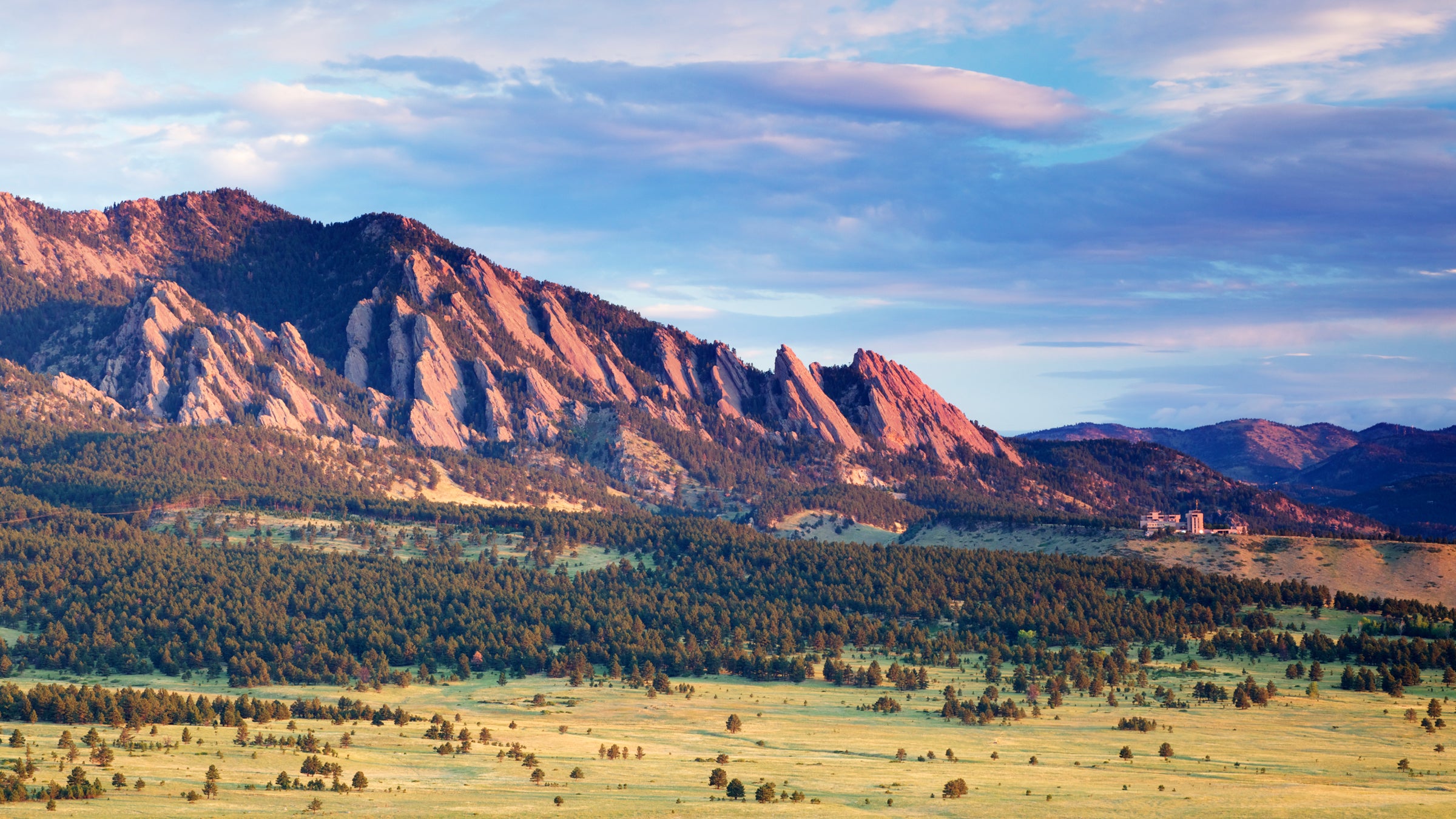
So you want to move to Boulder, Colorado, the perennial best town in America for (circle one or all depending upon your level of outsideness) roadies, rock jocks, organic consumers, backcountry skiers, mountain bikers, trail runners, ultrarunners, whitewater boaters, alpinists, credit-card environmentalists, New Agers, sellers of waterproof-breathable canine accessories, and those who support prairie dog emancipation at the expense of baseball fields. It's a great place to live, because everyone looks and thinks exactly like you.*
Except they're better than you. Get that straight and you'll fit in. But you'll matriculate quicker if you come with some attitude. Pose if you must. It's the best town in America, for Christ's/Buddha's/Ganesh's/Chris Carmichael's sake. Step up.
But what's it like to live here? Well, Boulder exudes a unique blend of over-the-top liberalism and extreme fitness. How to describe it . . . If Lance Armstrong and Amy Goodman had a love child, the prodigy would drive his Audi A4 to Boulder, buy a Maverick to decorate the roof rack, and then not ride the $5,000 bike because he didn't want to encroach upon mountain lion habitat. Are you feeling the zeitgeist? Some more Boulder color might help:
A Buddhist monk moved into our condo complex. Shaved head, full regalia, real deal. He drives a 30-cylinder pickup truck named after a subarctic ecosystem where trees don't grow and frost lingers.
Two strangers have said the word excelente to me in the past four months.
My barista (Oh, dear Lord, what's happening to me?) to a fellow barista: “Cuba is, like, this paradise. Nothing has changed since, like, the fifties. They drive these old cars and play this great music.” Me: “Cuba? They put AIDS patients in concentration camps and throw journalists in jail for printing the truth.” Barista: “Uh, yeah, but the people are so happy down there. Who had the tall rice-milk latte?”
If Lance Armstrong and Amy Goodman had a love child, the prodigy would drive his Audi A4 to Boulder, buy a Maverick to decorate the roof rack, and then not ride the $5,000 bike because he didn't want to encroach upon mountain lion habitat.
Need more telling details? The Dunkin' Donuts went out of business, but the oxygen bar next door to the gay-and-lesbian bookstore seems to be doing well. The panhandlers on the Pearl Street Mall sport $70 sandals and pull in upwards of 25 bucks an hour. Did anybody mention that the median sale price of a home here is $525,000? That's $302,000 more than the national figure. The best don't come cheap. If that's too pricey for you, maybe you should check out Burlington or Santa Fe. Oh, right: bad sushi.
OK, that's all lifestyle stuff that comes with living in a town that has a large contingent of soft-palmed check-of-the-month-clubbers. Could just as easily be Marin County. Buy a meditation table, slap a GO VEGAN! sticker on your roof box, and you'll blend. You're here for the fitness pursuits anyway.
Except that's where Boulder gets weird. In most American towns, outdoor-sports aficionados are part of an elite counterculture minority. Mountain bikers and climbers have cachet. Not so in Boulder. Recreating outdoors is the norm here, and it's in your face. There's always some horse-toothed mountain-town equivalent of Laird Hamilton ready to kick your athletic pride through the dirt. Remember the 2005 Tour, when T-Mobile kept attacking Discovery, trying to break Lance? That's what a casual bike ride is like in Boulder. Strangers attack. Old guys with gray beards and steel bikes attack. Reach for a shot of Gu and even your friends attack. And women: Women always attackÔÇöthey're the worst.
Even slow guys like me attack. The other day I was reeling in a pro cyclist on a brutal local climb. My heart rate was near its max, but I was feeling good. I was in the zone. Maybe four years of living in Boulder have paid some fitness dividends, I thought.
Then I figured it out: He's between intervals, and once his heart rate drops below 65 bpm, he's gone. At least he said “No offense” before he accelerated.
It doesn't matter what sport you do; you will suffer similar humiliation. Go nordic skiing in North Boulder Park and two Olympians shout “Track!” from a meter back. Climb the Flatirons only to learn that someone once ascended in Rollerblades. Get Maytagged in a hole while paddling Boulder Creek and a World Cup champion slalom kayaker will toss you a rope bag. Running? Not me, not in Boulder. Boulderites run like gazelles. Fancy yourself a mountaineer? The waiters at Sherpa's have summited Everest. But at least those guys are nice. If Reinhold Messner himself walked into south Boulder's mountaineering shop to buy a carabiner, the sales staff would give him attitude. It's enough to make you revolt against the blue sky (300 sunny days a year), pull down the blinds, and watch NASCAR.
I know what you're thinking. If you don't like it, why don't you get the hell out? I'll tell you why: It's pretty damn nice here, actually. I just bought a German automobileÔÇögonna chip it. My four-year-old has attended two birthday parties in climbing gymsÔÇölittle dude will be free-soloing soon. Maybe it's the endorphin equivalent of a contact high, but I've never been in better shape. The sun is shining. The prairie dogs in the infield are chirping. One more round of whitening strips and my choppers will be gleaming. Everything's, like, most excelente.
* If your teeth are pearly white and your resting heart rate is below 45 bpm.

